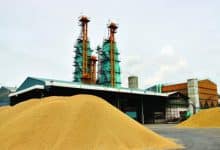Thai rice purity at risk due to popularity of foreign strains

Thai rice finds itself in a perilous position as the purity of its strains is at risk due to the rising popularity of foreign rice strains smuggled from neighbouring countries, warns the nation’s agriculture minister, Thammanat Prompow. Speaking at the annual Thai rice conference organised by the Thai Rice Foundation Under Royal Patronage, Thammanat expressed his worries about the future of Thai rice. Despite producing vast revenues, Thai farmers are still ensnared in poverty and debt.
Thammanat highlighted that Thailand exports approximately 8 million tonnes of rice a year, generating approximately 140 billion baht. Nevertheless, the high cost of investment, including rising prices of fertilisers, pesticides, and labour, plunges about 4.68 million farming families into enormous financial difficulties.
To combat this, many farmers have resorted to cultivating foreign rice strains in pursuit of higher yields, thereby endangering the purity of native strains. Known for its soft texture, elongated grains, and aromatic fragrance, Thai rice now stands at risk as alien strains are often mixed with high-quality Thai rice. This, Thammanat describes, is a vicious circle that will destroy Thai rice.
“The ministry will try to ensure Thai rice continues to exist and is planted by farmers. Further investment in the development of domestic rice strains is key so we have better strains of Thai rice in the future, with a high yield and strong resistance to disease and climate change.”
At the International World Rice Conference from November 28 to November 30 in Cebu, Philippines, Vietnam surpassed Thailand yet again for the title of world’s best rice.
In response to this, Thammanat said that Thailand decided not to compete this year as the competition’s regulations were deemed unsuitable for Thai rice, which focused too heavily on high-yield production as a judging criterion, reported Bangkok Post.
Higher yields
Natthakit Khongthip, head of the Department of Rice, assured that his department is performing its duties in researching and developing rice strains for higher yields that are more disease and weather resistant.
“By next April, we will announce eight new rice strains to farmers.”
Currently, the department produces 105,000 tonnes of rice seeds annually and distributes them to farmers, a far cry from the annual seed requirement of 1.3 million tonnes. Private companies and rice communities produce the majority of the breeding seeds, meeting about half the annual requirement, while local farmers keep the rest.
Nipon Puapongsakorn, an agricultural expert at the Thailand Development Research Institute (TDRI), noted that almost half the rice plantations in the central region use Vietnamese rice strains due to their higher yield of over one tonne per rai and the shorter harvest life of 90 days, as compared to 120 days for Thai rice strains.
Farmers require short-life rice to ensure an early harvest before the rainy season and the ensuing floods. Nipon recommended that the country aid researchers in developing more domestic rice strains. Rice from Vietnam has been combined with the genes of other rice from northern Asia to produce higher yields.
“Legal amendments are important if we want to improve our rice strains to compete with others.”
Latest Thailand News
Follow The Thaiger on Google News:


























